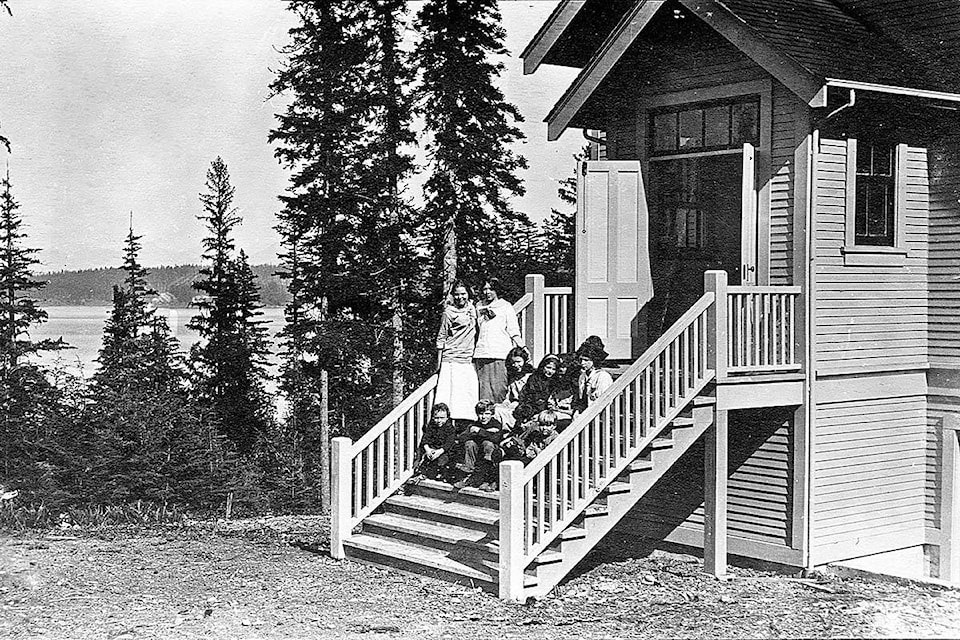By Thelma Silkens
When their teacher rang the school bell in September 1912, 16 children lined up to enter a newly built schoolhouse at Campbell River. Atop a hill, the little building stood proudly amidst the nearby trees, the waters of Discovery Passage stretching out below.
Stairs led to a porch and little entry hall from which two doors opened into the one-room school. Inside were rows of single desks, a blackboard at the front behind the teacher’s desk, and a big stove in one corner. There were more blackboards down one side of the room, and a rows along the opposite side – which did not have a view of the water. The school had a full basement, and outside were a playground and “his” and “hers” outhouses.
In the bay below the schoolhouse stood the large and impressive Willows Hotel, the landmark of the area, a mecca for sportsfishing tourists and thirsty loggers. Near the hotel were the wharf, a store and a sprinkling of houses and other buildings. The community of Campbell River was not very large, but it had grown since the first attempt to establish a school two years before. At that time, a handful of students gathered for classes in a room in the “Annex” to the Willows Hotel. The teacher, appropriately named Mr. Campbell, was a new graduate on his first teaching job, but he was transferred and the school closed in mid-October when the enrollment did not meet the required minimum of seven pupils.
The following year, enough children could be gathered from local settler families to maintain a classroom in the Annex, under the tutelage of a Miss Rath, and Charles Thulin then donated land for the construction of a schoolhouse located at the present 9th Avenue and Cedar Street. Miss Rankin was the teacher in 1912, followed by a succession of, for the most part, young women teachers who stayed for one or two years.
The school enrollment had grown to 21 by 1915 and continued to increase. First Nations children from the village on the Campbell River Spit were not included in the count of the number of children needed for a school, and were forced to attend residential schools away from home. The pupils at the school came from families whose homesteads were scattered from the north side of the river to Willow Point in the south, and some, like the Swansky boys, walked as far as five miles to school. One family, the Holms, lived right across from the schoolhouse, and Mr. Holm or his son would light the fire for the teacher first thing in the morning. There was no bridge, so the Perkins and Vanstone children had to cross the river by rowboat in addition to a long walk.
The children learned to be hardy. One day Bernice Ryan found her route to school was flooded and went back home, only to be told by her mother to take off her shoes and socks and wade through.
When bad weather blew up, the students who had to row across the river each day were stranded and had to wait hours to get home.
A new two-room schoolhouse on the Island Highway opened in 1924. The little schoolhouse on the hill was sold and became a family home. Although ownership changed, it continued to be used as a residence for the next 50 years while the town grew around it.
